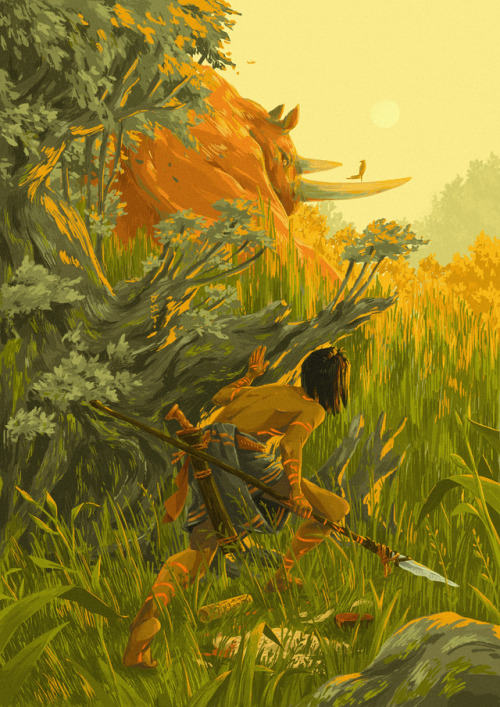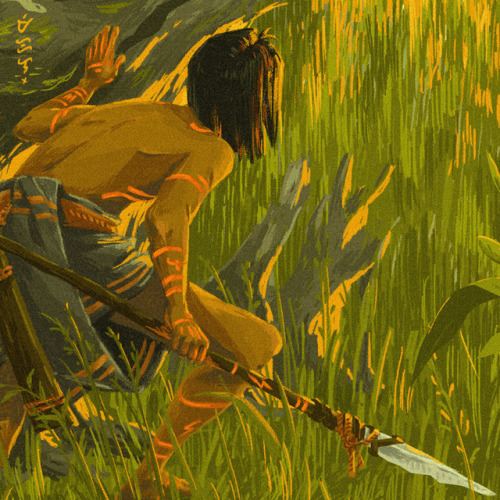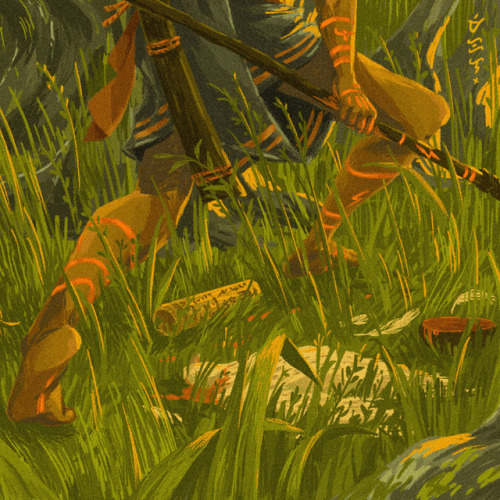#maharlika
“Rite of Passage”
Before the Philippines fell in the hands of the Spanish conquistadores, The Maharlika was the feudal warrior class of the Tagalog Region.
For the Maharlika, to become a man and a warrior, a boy begins training at an early age to prepare himself for the rite of passage. During puberty and when the moon is visible in the day light, he must hunt a ferocious beast and return with its deadliest body part as trophy. The more dangerous the beast, the manlier he becomes.
The Maharlika Initiate performs a ritual of sacrifice using a white fowl’s blood to create markings on his skin, as he follows instructions carved on a bamboo cylinder. The blood marks temporarily give its bearer protection, enhanced strength and speed; it can also enchant weapons to acquire magical properties.
The Sarangay was one of the favorite prey of The Maharlika Initiate and although a herbivore, turns hostile and attacks when provoked or threatened; it stands up on its hind legs to intimidate the threat and the natives mistaken it for a half-man monster. The Spanish Conquistadores slayed the few remaining ones for bounty, resulting to their extinction. Their ivory horns were highly valuable exports, traded via the Manila-Acapulco Galleon in the 16th and 17th century.
*This is a work of fiction, intertwining myth and history into magic realism. Magical blood markings and the reimagined sarangay creature were based from folklore. The rite of passage and the extinction of the creature are metaphors for the non-progressive traditions/practices of the natives and the Spaniards’ attempt to destroy the pagan roots of the ancient Philippines while exploiting the land.
Post link




